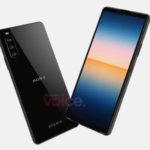The future of wearables, according to Qualcomm: Improvements in five areas inbound
At its Internet of Everything showcase in San Francisco, Qualcomm gave us an idea of what the future looks like for wearables – and it looks good with more than 20 designs in development and improvements in five areas coming.
If you’ve got a smartwatch, chances are there is something or a few things which you don’t like about it. Whether it’s having to charge it all the time, slow performance or it physically being too big, things will get better if Qualcomm has anything to do about it.
The firm is in a good position to make an impact too. You might not even know it, but there’s a decent chance your smartwatch, fitness tracker or other wearable gadget including action cameras is powered by one of the firm’s chips.
Smartwatches withAndroid Wear tend to use a Snapdragon 400, you’ll find the Snapdragon S4 in will.i.am’s wearable and solutions like the QSC6270 which includes 3G in the Timex Ironman One GPS (below). Meanwhile, smartglasses like the ODG R7 and prototype BMW Mini Augmented Vision Glasses (above) use a higher-end Snapdragon 805.
The latter is particularly interesting (and crosses with car tech), allowing you to retrospectively see what’s on the otherside of the body with exterior camerasplus information such as your speed via an HD display for each eye. Check out the video at the bottom of the page for a more detailed look.
See also: Android Wear update new features and release date.
Devices you can buy now are all first generation with the wearable market still very much in its infancy so those quibbles could well be a thing of the past. With an SoC (system on a chip) at the core of these devices, much of the future for wearables is in Qualcomm’s hands (and rival vendors of course) and the firm is aiming to make improvements in five areas.
First up is performance with future chips offering features such as more cores and higher clock speeds so the user experience is silkier. At the same time, Qualcomm is trying to improve power efficiency so we can get longer out of wearables – admitting that it will “never be good enough” but nevertheless is looking to push as much as possible.
Third on the list is size with a smaller chip comes a potentially smaller device which is great news if you think they’re all a little too big at the moment but that extra space could also be used to squeeze in a larger battery of even other tech.
Rounding out the five areas, Qualcomm also said it wants to improve the user experience with better and more aware sensors and improved connectivity such as Wi-Fi, NFC and GPS depending on the device.
So wearables of the future will be faster, last longer before needing to be charged, won’t weigh down your wrist and have an improved experience with better sensors and more connectivity. Sounds good to us so bring it on, Qaulcomm.















